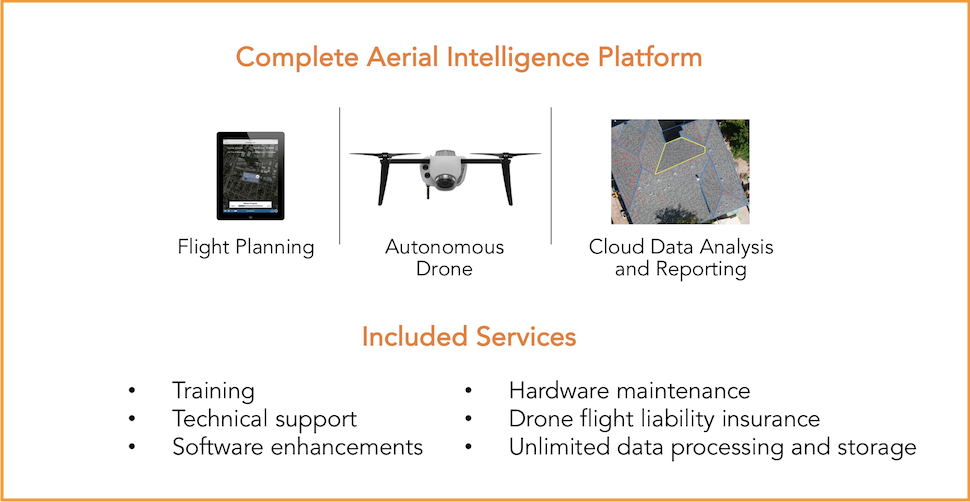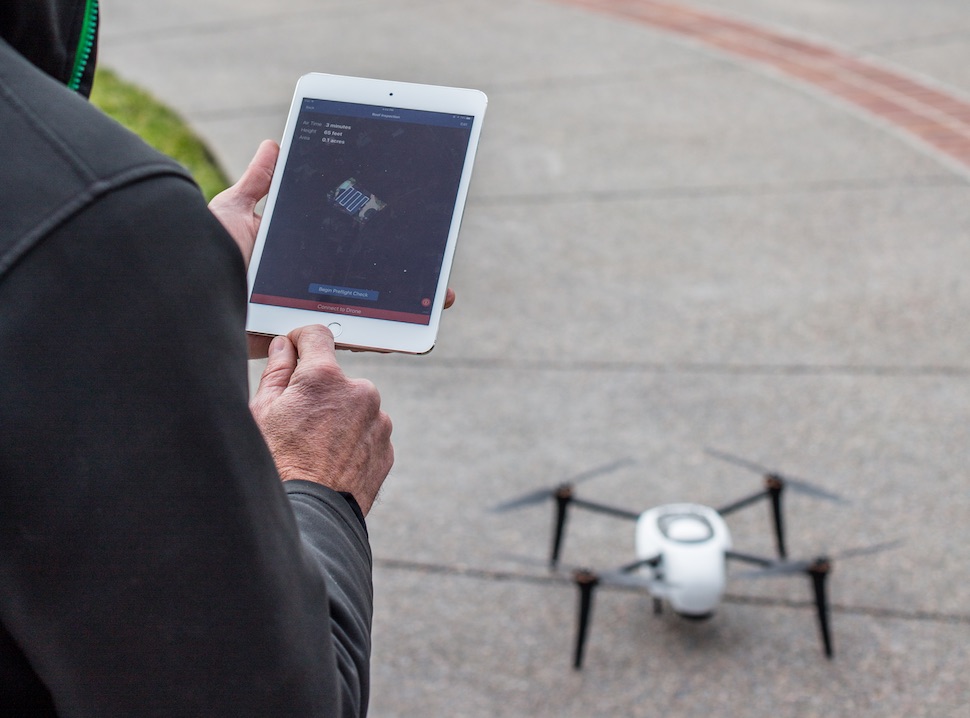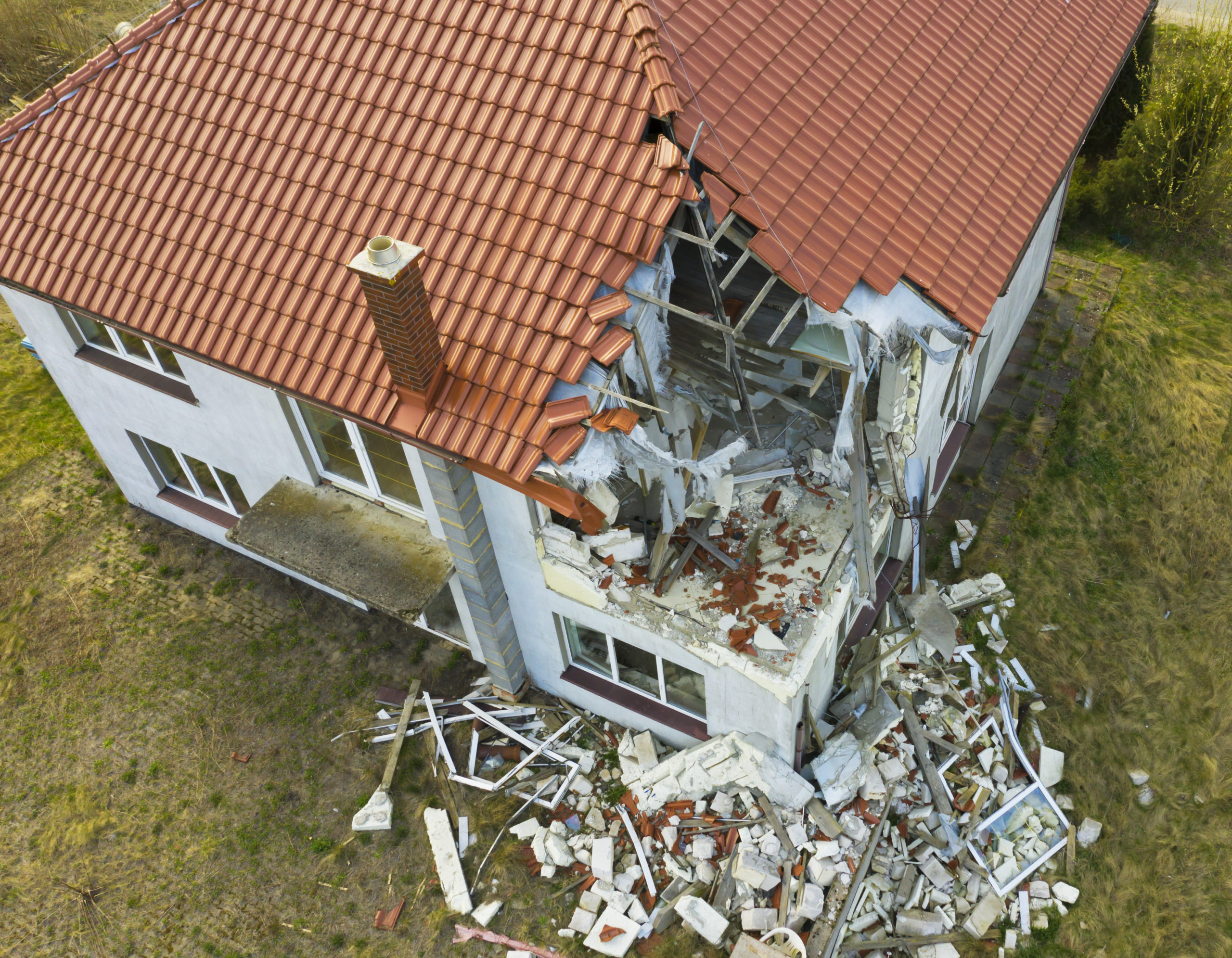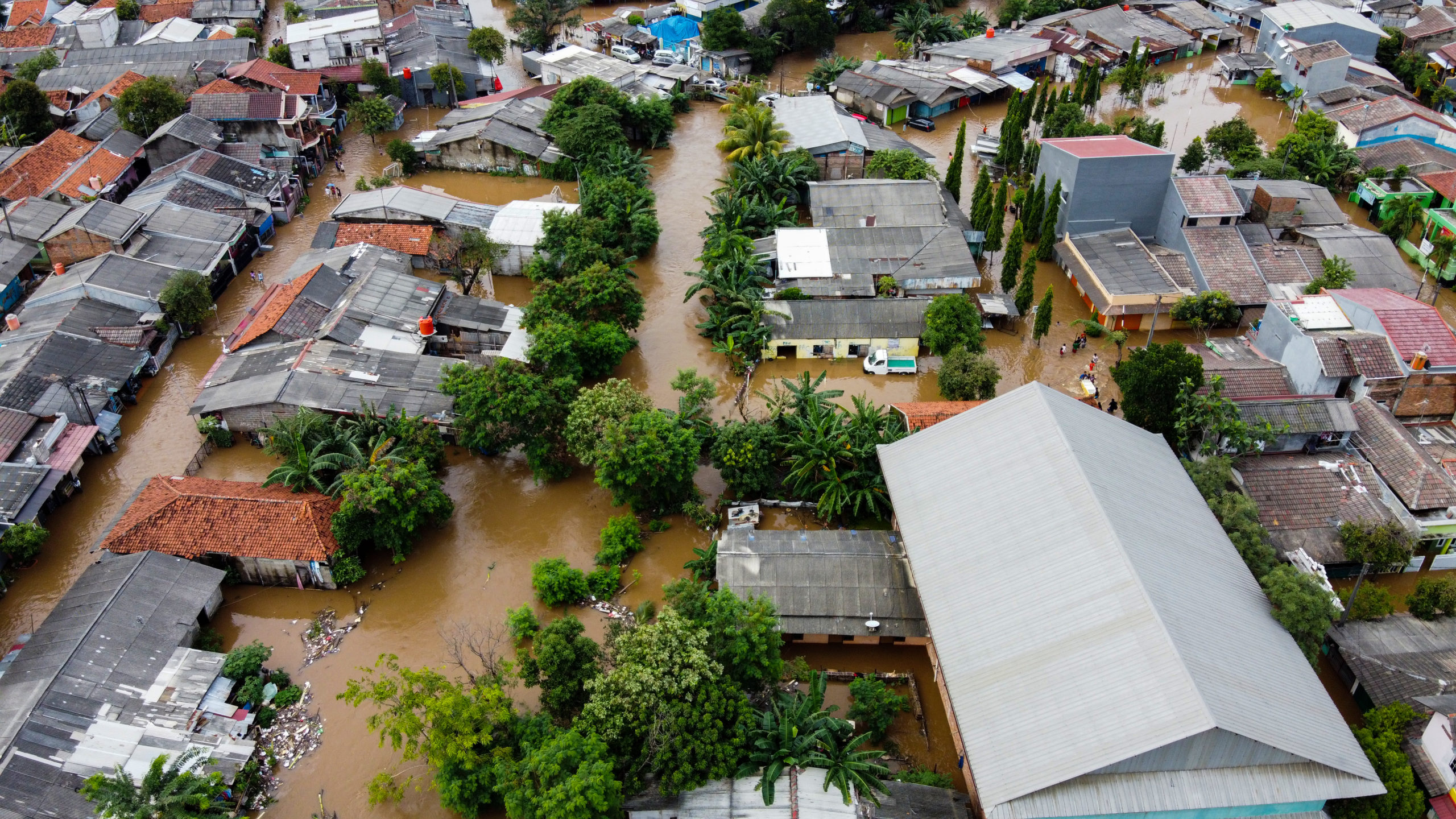- Reduce loss adjustment / inspection expenses through a more efficient process
- Improve the customer experience with transparency and faster repairs / rebuilds
- Increase safety for adjusters and roof inspectors
The experience of insurance carriers, independent adjusters, and roofing companies using drones to respond to the 2017 hurricanes in Texas and Florida has resulted in a proven model to implement this technology most effectively. In this two part blog series, we’ll dive into the “blueprint” that top companies are following to build a successful drone program.
Here in Part 1, we’ll cover the first 3 requirements:
- A detailed plan for drone deployment in storm regions
- An end-to-end solution that reduces the cost of storm claim inspections
- Safe, autonomous drones that let you scale across your organization
In Part 2, we’ll explain why you should invest in:
- Easy-to-use drone software and systems that accelerate your claims workflow
- Intelligent tools to automatically detect storm damage and build roof dimension models
- The ability to easily share data in reports or to downstream systems
A detailed plan for drone deployment in storm regions
You’ll want to begin by deploying drones and trained staff in the areas most likely to be affected by storms. Develop a detailed plan, timeline, and goals to include:
- A project timeline with distinct pilot, integration, and full production phases
- Identification of catastrophe response and regional teams to equip in the heaviest hail and hurricane regions
- Flight and regulation training, FAA Part 107 licensing
- Tracking of key program metrics to measure success and ensure ROI
An end-to-end solution that reduces the cost of storm claim inspections
To effectively handle the surge in claims from storms, be sure to implement a complete, end-to-end solution that automates the claims workflow, delivers the highest quality results, and lowers loss adjustment expenses. Beware of cobbled together “DIY” solutions and 3rd party service providers. These choices come with risks and inaccuracies that will ultimately cost you more in the long run. Complete bundled systems should include a mission planning “app”, the drone itself, and inspection-specific cloud software. Lastly, be sure to choose a knowledgeable provider that will help you ramp up your drone roof inspection program with training and support, and offers unlimited data processing to help control your costs.

Safe, autonomous drones that let you scale across your organization
Only fully autonomous drones fly themselves and capture data automatically, allowing anyone to fly safely and stay within designated geofenced areas. With simple, iPad “point and click” flight planning, you are ensured an efficient, repeatable process with the highest quality results. This enables insurance carriers and independent adjusters to quickly scale their drone operations for storm response, as you don’t need highly skilled pilots using manual joysticks to fly the drones. Additional benefits are that you minimize human error, potential damage or costs from a drone crash, and eliminate flying over unauthorized neighboring properties.

Stay tuned for our next blog, Part 2 of “How to Launch Your Drones for Storm Season”.
To learn more about how leading companies are taking charge of storm season with Kespry’s aerial intelligence solutions, download our Storm Season Checklist. You can also view the on-demand webinar here.




